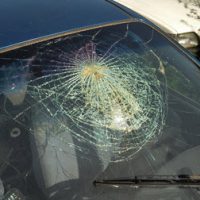Broken Glass Injuries Are Common In Car Accidents

People often associate car accidents with certain types of injuries, like whiplash, concussions, and broken bones. It’s true that these are some of the most common car accident-related injuries, but they are far from being the only ones. Some of the most severe injuries, for instance, are the result of lacerations caused by broken glass. Although most vehicle manufacturers install shatterproof windshields in their cars, these kinds of injuries can still occur, in which case, the injured party may be able to seek compensation for his or her losses from the at-fault driver who caused the crash.
Types of Broken Glass Injuries
The severity of a vehicle occupant’s broken glass injury is dependent on a few different factors, including the kind of glass used in the vehicle’s windows, the speed at which the vehicles were traveling before the crash, and the type of collision. Most, however, fall under one of the following categories:
- Surface level cuts, which require minimal treatment, like cleaning and observation because they don’t involve actual penetration of the tissues beneath the skin;
- Deep level lacerations, which involve not only the slicing of a person’s skin, but also the muscles and tissues underneath; and
- Amputations, which occur when large pieces of shattered glass cut all the way to the bone, often resulting in or requiring the severing of the victim’s limb.
Even suffering a relatively minor broken glass injury can be frightening due to the quantities of blood that are lost. Treatment is often not much better, with victims forced to undergo painful surgical treatments and to undergo rehabilitation. The exact nature of the treatment, however, will depend on the type of injury in question.
Treatment of Broken Glass Injuries
While minor surface level cuts may only require cleaning, anything more serious than this often necessitates suturing, stitches, or even staples. When a laceration is severe, a person may require surgery to not only halt blood loss by repairing blood vessels, but also to reattach muscles and tendons. Unfortunately, even once this treatment has been obtained, a victim could still be struck down by infections, which are particularly common in those with lacerations. Those with lower limb cuts or lacerations longer than five centimeters are most at risk of suffering from a secondary infection. Common symptoms of an infected accident-related laceration include fevers, muscle aches, a delayed healing process, and more noticeable scarring. Even individuals who are fortunate enough to avoid a major infection will likely still have some sort of scarring. Muscle and nerve damage could also end up being permanent.
Nearly 40 Years of Experience Representing Tampa Accident Victims
If you suffered a laceration or other injury in a car accident that was caused by someone else’s negligence, you could be entitled to compensation, not only for your medical expenses, but also for the pain and suffering that often accompany permanent scarring. At Anderson & Anderson, can walk you through your legal options, as well as the ins and outs of the civil claim filing process. Call our dedicated Tampa car accident lawyers at 813-251-0072 today to get started.
Sources:
medlineplus.gov/ency/imagepages/19616.htm
ncbi.nlm.nih.gov/pmc/articles/PMC3797169/
